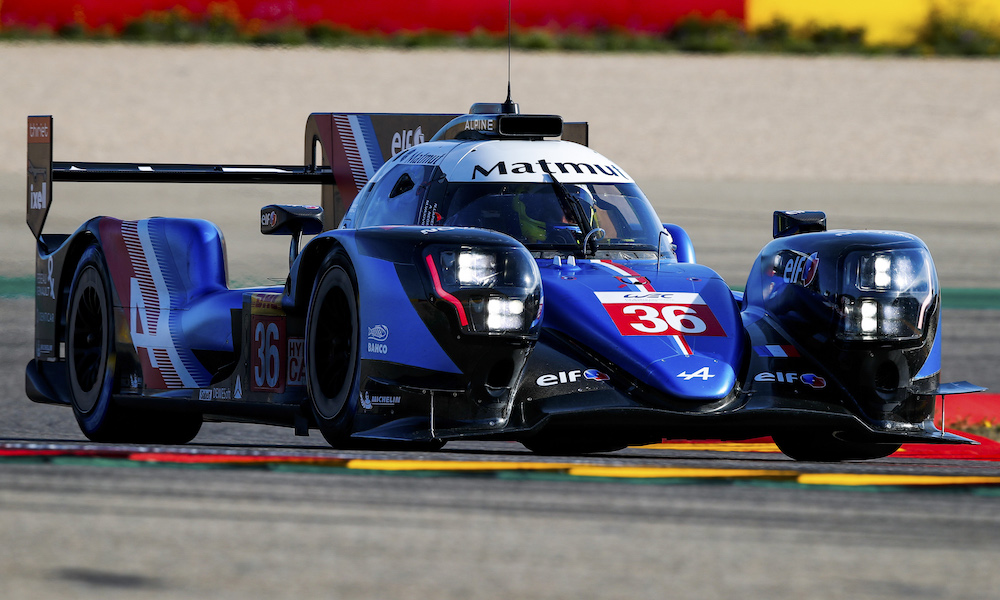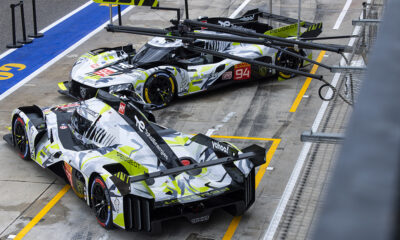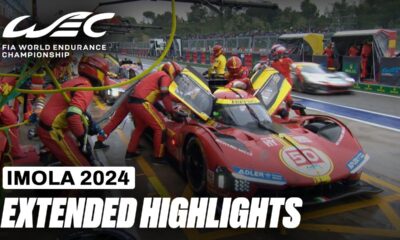Some “fine-tuning” will be needed to increase the pace gap between cars in the FIA World Endurance Championship’s Hypercar and LMP2 categories ahead of the 2021 season, according to Alpine Endurance Team principal Philippe Sinault.
Alpine’s grandfathered A480 Gibson LMP1, which previously ran as a Rebellion R13, conducted its first and so far only pre-season test at Motorland Aragon last month.
The session included a match-up with the Oreca 07 Gibson LMP2 car of Richard Mille Racing, which is also being operated by the Signatech organization led by Sinault.
Speaking after his team’s program launch on Tuesday, Sinault told Sportscar365 that Alpine “anticipated” the reduced power and increased weight figures that the A480 Gibson is set to experience under the WEC’s Hypercar Balance of Performance system.
A BoP process has been introduced in the top category because the new breed of Le Mans Hypercars are projected to lap Le Mans around 15 seconds slower than LMP1.
There has also been a 40 hp reduction for LMP2 to distance the two prototype classes, but Sinault suggested that the categories have been coming close to each other on-track.
“It will be difficult, especially with LMP2,” he said. “We ran with the Richard Mille LMP2 so we have a clear view about the difference between LMP2 and Hypercar/LMP1.
“I think they have to fine-tune with the ACO and FIA about the gap between LMP2 and the top class.
“It was one of the benefits [for Alpine] to have two cars in two different categories.
“My target was to provide a clear view and objective information to the FIA and ACO about this. The subject needs fine-tuning still.”
Sinault would not be drawn to comment on the lap time difference between the LMP1 and LMP2 cars but indicated that the margin was “not enough”.
Despite this, he said his team was largely satisfied with the A480’s first test which saw Alpine’s 2021 drivers Nicolas Lapierre, Andre Negrao and Matthieu Vaxiviere turn laps.
“The first day we had some rain, but after that two days on the dry track,” said Sinault.
“We achieved a lot of laps and have a confirmation about the reliability of the car. We tested in a pragmatic way, to review all the details of aerodynamics and traction control, for example.
“We plan the program with two main characteristics: the weight and level of power. The difference is not huge with the level of performance of LMP2, except in terms of aerodynamics.”
Sinault explained that Alpine’s testing so far has been “for the knowledge” rather than channeling outright performance.
But he also expressed confidence in the Hypercar BoP process leading to close racing between Alpine’s LMP1, Toyota’s GR010 Hybrid and the non-hybrid SCG 007 LMH.
“To be honest it’s a really hard exercise to do. Even for us, it was not easy. We do not have the magic solution for the balance of performance. I am confident, because we have a good sharing of information with the FIA and ACO.
“It is always [done] in a fair way. It is in the interests of everybody [for] the FIA to prove that it’s a fair way to manage the balance of performance; to secure the deals with Porsche, Audi, Ferrari and so on.
“At the moment we are playing an open book with the ACO and FIA because we are confident in the spirit of management of BoP. Maybe I am naïve, but I don’t think so because it’s a common interest for everybody.”
Alpine Managing Grandfathered Tire Situation
Sinault added that the Aragon test enabled Alpine to sufficiently understand how the Michelin slick tire from last season interacts with the slower and heavier LMP1 car.
Michelin has developed new tires for LMH but is not allowed to alter its 2019-20 LMP1 tire product. The French supplier had staff at Alpine’s Aragon test to verify whether it would be “fine and fair” to grandfather tires for a car with reduced performance.
“It’s a really important point,” said Sinault. “The way to manage a tire’s potential is different compared with last year for LMP1.
“But we have achieved a good compromise and balance, and we reached our target to put more energy in the tire. In the end, we have an efficient and consistent tire.
“For this type of tire, it’s really easy to manage to achieve several stints. Maybe not five, but three or four will be possible [at Le Mans] I think.”
While Alpine experienced some rain on its first day of running, Sinault admitted the team is lacking data on the wet Michelin tire, but opportunities may yet come before the first race at Spa on May 1.
The WEC’s move to again push back the start of its season is set to give Alpine a window to conduct more private LMP1 testing next month.























